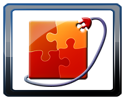Author: Bruce Byfield
Firefox’s default bookmarks remain painfully limited. They collect only URLS, which can only be organized with annotations and folders. JetArk’s Jeteye extension, with its promise to “super-power your bookmarks” promises features more suitable for modern Web browsing. With “jetpaks” that resemble the containers available in the Basket desktop note application, Jeteye largely delivers on this promise. Its main drawback is that it is better at storing than manipulating different elements, especially compared with the rival ScrapBook extension.

To use Jeteye, you must register on Jeteye’s site, where jetpaks are stored. This registration gives you the option of entering an alias and remaining anonymous — assuming, of course, that your email address does not include hints about your identity. Once you’ve registered, you can access your jetpaks from any computer or Web-enabled portable device.
While you are on the site, browse some of the publicly available jetpaks created by other people. While many of these consist entirely of URLs, and thus could just as easily be collections of default bookmarks, others show how saving only the relevant elements can enhance such tasks as comparison shopping, travel planning, or general research.
Once you have received the email confirmation of your registration, you can install the Firefox add-on. After restarting Firefox, open the Jeteye sidebar either from the icon in the lower right corner of the Firefox window or by selecting Tools -> Jeteye. You will probably want to adjust the size of the sidebar almost immediately, since it occupies 40% of the browser window. You will also need to log in so that you can use the storage site.
The Jeteye sidebar contains a searchable list of your jetpaks and a drop-zone for creating jetpaks with the mouse. Using the extension is as simple as dragging the object you want to save to the drop-zone or an existing jetpak in the sidebar. To save text, you need to highlight it first, while for a video you need to drag the embed code rather than the video itself, but you can drop graphics, URLs, and tabs directly.
When you drop an object on the drop-zone Jeteye prompts you for a name for a new jetpak, and you can specify whether each jetpak is public or private — although the makers of the extension reserve the right to change any public jetpak with objectionable material to private without asking the owner. You can also add tags and a summary to each jetpak in the list.
Beyond that, Jeteye is somewhat limited in features. It used to allow others to comment on your public jetpaks, but that feature has been discontinued, presumably because it was abused, although the developers are apparently willing to listen to arguments for reinstating the feature. Nor does it allow you to rearrange the order or position of objects within a jetpak, although the Web site hints that such features are in development.
In fact, compared to ScrapBook, Jeteye is generally lacking in tools to manipulate the collected material. ScrapBook, for instance, offers four types of highlighting for text, as well as light editing, as well as the ability to link to other URLS or files, and other features that allow you not just to store different types of data, but also to edit and connect them to make them more useful. In comparison, Jeteye has not progressed far beyond the simple act of storage.
Business users or anyone concerned with privacy might also be hesitant to trust their jetpaks to a public Web site, even thought JetArk does post a privacy policy. What Jeteye does is not so different from what Flickr does with photos or del.icio.us does with with bookmarks, and the convenience of access from any machine is undeniable. However, the process of selection and even limited data manipulation gives jetpaks another layer of information that photos or bookmarks generally lack — and, therefore, may create a greater need for privacy. Not only could careless users mix private and public elements in the same jetpak, but the grouping of elements may show connections that a mere collection of bookmarks does not. For such reasons, an option for storing jetpaks locally might be a welcome enhancement.
Another problem is that Jeteye does not work in Mozilla browsers such as Epiphany, or in IceWeasel, Debian’s rebranded version of Firefox. In these browsers, you can log in, and the dialog for creating a new jetpak opens when you drag something to the drop-zone, but the new jetpak is not listed in the sidebar. Judging from some of the reviews on the extension’s download site, other browsers or systems may also suffer this problem.
With time, Jeteye may correct such problems. However, unless your needs are simple or the advantage of accessibility from any machine is important to you, then you are probably better off with ScrapBook. Jeteye has promise, but it will probably be another major release or two before the extension is all that it should be.
Every Monday we highlight a different extension, plugin, or add-on. Write an article of less than 1,000 words telling us about one that you use and how it makes your work easier, along with tips for getting the most out of it. If we publish it, we’ll pay you $100. (Send us a query first to be sure we haven’t already published a story on your chosen topic recently or have one in hand.)
Categories:
- Reviews
- Internet & WWW


